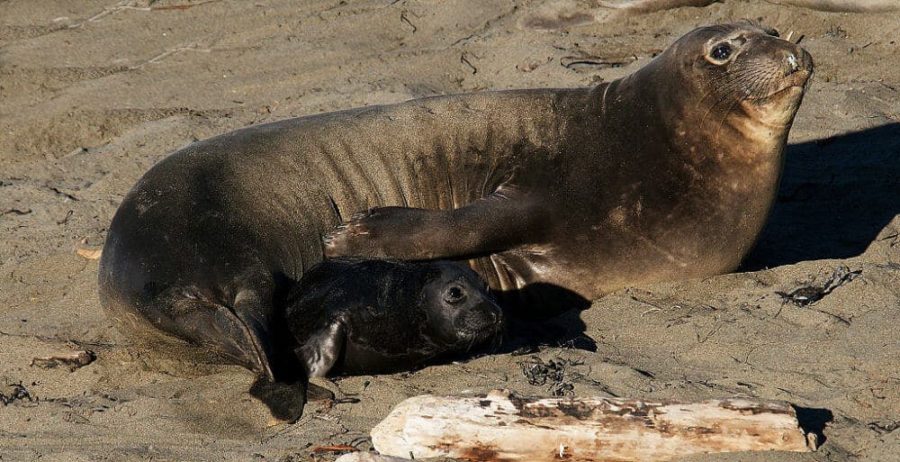A recent paper published in Frontiers in Marine Science on the visualization and sonification of animal tracks showcases the collaboration between the Red Sea Research Center and the Visualization Core Lab.
The authors of the paper, including Carlos Duarte, Paul Riker and Madhu Srinivasan from King Abdullah University of Science & T, conducted a sonification experiment, where the collective movement of northern elephant seals was explored by visualizing and coding their group dynamics into sound.
The research team analyzed and extracted features from raw GPS tracking data derived from a tagging program involving a total of 321 tagged animals tracked over a decade, and mapped the data parameters to the sonic parameters of frequency (pitch) and amplitude (volume). The concept was that each animal traveling within a group would be assigned an instrument, a cello, with a different note, and that the distance from the colony would be coded as the pitch of the note. The spread of the group across the ocean will be coded as volume, with the group sounding loud when they were traveling closer together.
This approach successfully compressed 10 years-worth of data including over one million positions of hundreds of animals into a 45-minute symphony that revealed evidence of remarkable coordination in the way these animals, sometime separated over thousands of kilometers from the nearest conspecific, explore the North Pacific Ocean. These insights have led to new cutting-edge research being spearheaded at KAUST.
If our reporting has informed or inspired you, please consider making a donation. Every contribution, no matter the size, empowers us to continue delivering accurate, engaging, and trustworthy science and medical news. Independent journalism requires time, effort, and resources—your support ensures we can keep uncovering the stories that matter most to you.
Join us in making knowledge accessible and impactful. Thank you for standing with us!

